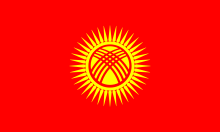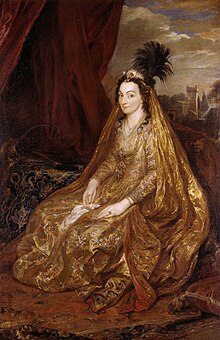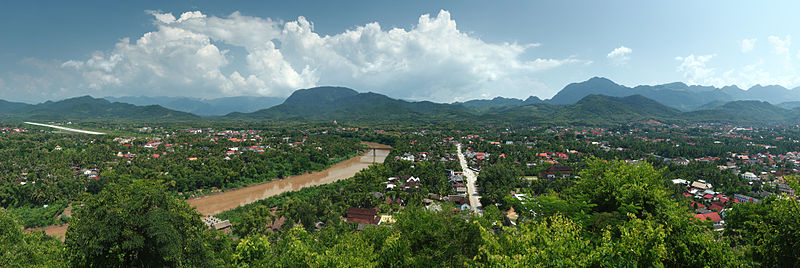Portal:Asia

 Asia (/ˈeɪʒə/ ⓘ AY-zhə, UK also /ˈeɪʃə/ AY-shə) is the largest continent in the world by both land area and population. It covers an area of more than 44 million square kilometers, about 30% of Earth's total land area and 8% of Earth's total surface area. The continent, which has long been home to the majority of the human population, was the site of many of the first civilizations. Its 4.7 billion people constitute roughly 60% of the world's population. Asia shares the landmass of Eurasia with Europe, and of Afro-Eurasia with both Europe and Africa. In general terms, it is bounded on the east by the Pacific Ocean, on the south by the Indian Ocean, and on the north by the Arctic Ocean. The border of Asia with Europe is a historical and cultural construct, as there is no clear physical and geographical separation between them. It is somewhat arbitrary and has moved since its first conception in classical antiquity. The division of Eurasia into two continents reflects East–West cultural, linguistic, and ethnic differences, some of which vary on a spectrum rather than with a sharp dividing line. A commonly accepted division places Asia to the east of the Suez Canal separating it from Africa; and to the east of the Turkish Straits, the Ural Mountains and Ural River, and to the south of the Caucasus Mountains and the Caspian and Black seas, separating it from Europe. China and India traded places as the largest economies in the world from 1 to 1800 CE. China was a major economic power for much of recorded history, with the highest GDP per capita until 1500. The Silk Road became the main east–west trading route in the Asian hinterlands while the Straits of Malacca stood as a major sea route. Asia has exhibited economic dynamism as well as robust population growth during the 20th century, but overall population growth has since fallen. Asia was the birthplace of most of the world's mainstream religions including Hinduism, Zoroastrianism, Judaism, Jainism, Buddhism, Confucianism, Taoism, Christianity, Islam, Sikhism, as well as many other religions. (Full article...) Featured article Taiko (太鼓) are a broad range of Japanese percussion instruments. In Japanese, the term taiko refers to any kind of drum, but outside Japan, it is used specifically to refer to any of the various Japanese drums called wadaiko (和太鼓, lit. 'Japanese drums') and to the form of ensemble taiko drumming more specifically called kumi-daiko (組太鼓, lit. 'set of drums'). The process of constructing taiko varies between manufacturers, and the preparation of both the drum body and skin can take several years depending on the method. Taiko have a mythological origin in Japanese folklore, but historical records suggest that taiko were introduced to Japan through Chinese and Korean cultural influence as early as the 6th century CE; pottery from the Haniwa period depicting taiko drums has also been found. Some taiko are similar to instruments originating from India. Archaeological evidence also supports the view that taiko were present in Japan during the 6th century in the Kofun period. Their function has varied throughout history, ranging from communication, military action, theatrical accompaniment, religious ceremony and concert performances. In modern times, taiko have also played a central role in social movements for minorities both within and outside Japan. (Full article...)Selected Country Kyrgyzstan, officially the Kyrgyz Republic, is a landlocked country in Central Asia, lying in the Tian Shan and Pamir mountain ranges. Bishkek is the capital and largest city of the country. Kyrgyzstan is bordered by Kazakhstan to the north, Uzbekistan to the west, Tajikistan to the south, and China to the east and southeast. Ethnic Kyrgyz make up the majority of the country's 7 million people, followed by significant minorities of Uzbeks and Russians. Kyrgyzstan's history spans a variety of cultures and empires. Although geographically isolated by its highly mountainous terrain, Kyrgyzstan has been at the crossroads of several great civilizations as part of the Silk Road along with other commercial routes. Inhabited by a succession of tribes and clans, Kyrgyzstan has periodically fallen under larger domination, for example the Turkic nomads, who trace their ancestry to many Turkic states. It was first established as the Yenisei Kyrgyz Khaganate. Later, in the 13th century, Kyrgyzstan was conquered by the Mongols; it regained independence, but was later invaded by the Dzungar Khanate. After the fall of Dzhungars, Kyrgyz and Kipchaks were an integral part of Kokand Khanate. In 1876, Kyrgyzstan became part of the Russian Empire, and in 1936, the Kirghiz Soviet Socialist Republic was formed to become a constituent republic of the Soviet Union. Following Mikhail Gorbachev's democratic reforms in the USSR, in 1990 pro-independence candidate Askar Akayev was elected president. On 31 August 1991, Kyrgyzstan declared independence from the USSR and a democratic government was established. Kyrgyzstan attained sovereignty as a nation state after the breakup of the Soviet Union in 1991. (Full article...)Featured biographyTeresa Sampsonia (born Sampsonia; after marriage Lady Shirley, 1589–1668) was an Iranian-English noblewoman of the Safavid Empire of Iran. She was the wife of Elizabethan English adventurer Robert Shirley, whom she accompanied on his travels and embassies across Europe in the name of the Safavid King (Shah) Abbas the Great (r. 1588–1629). Teresa was received by many of the royal houses of Europe, such as English prince Henry Frederick and Queen Anne (her child's godparents) and contemporary writers and artists such as Thomas Herbert and Anthony van Dyck. Herbert considered Robert Shirley "the greatest Traveller of his time", but admired the "undaunted Lady Teresa" even more. Following the death of her husband from dysentery in 1628, and due to impediments from grandees at the court, and the authorities, during the reign of Abbas's successor and grandson Safi (r. 1629–1642), Teresa decided to leave Iran. She lived in a convent in Rome for the rest of her life, devoting her time to charity and religion. As a pious Christian, and because of her love for her husband, Teresa had Shirley's remains transported to Rome from Isfahan and reburied; on the headstone of their mutual grave she mentions their travels and refers to her noble Circassian origins. (Full article...)General imagesThe following are images from various Asia-related articles on Wikipedia. Featured picture Credit: Pratheepps The Toda people are a small pastoral tribe of less than 1,000 people who reside in the Nilgiri hills of Southern India. Shown here is a typical Toda hut, about 3 m (10 ft.) high, 5.5 m (18 ft.) long and 2.7 m (9 ft.) wide. They are built of bamboo fastened with rattan and thatched. The hut has only a tiny (about 0.9 x 0.9 m, 3 x 3 ft.) entrance at the front, which serves as protection from wild animals.
Did you know...
Updated: 6:33, 14 February 2024 In the news
Related portalsMajor Religions in Asia Middle East Central Asia and Surroundings Indian Subcontinent Southeast Asia East Asia Selected panorama
Panorama of the city of Luang Prabang in northern Laos, as seen from Phu Si hill. The city was formerly the capital of a kingdom of the same name, and after Laos's independence from France, it was the royal capital and seat of government of the Kingdom of Laos. This view features the Nam Khan river on the left, and Luang Prabang International Airport on the very far left. TopicsCategoriesAssociated WikimediaThe following Wikimedia Foundation sister projects provide more on this subject:
More portalsShortcuts to this page: Asia portal • P:ASIA Purge server cache |





























































































